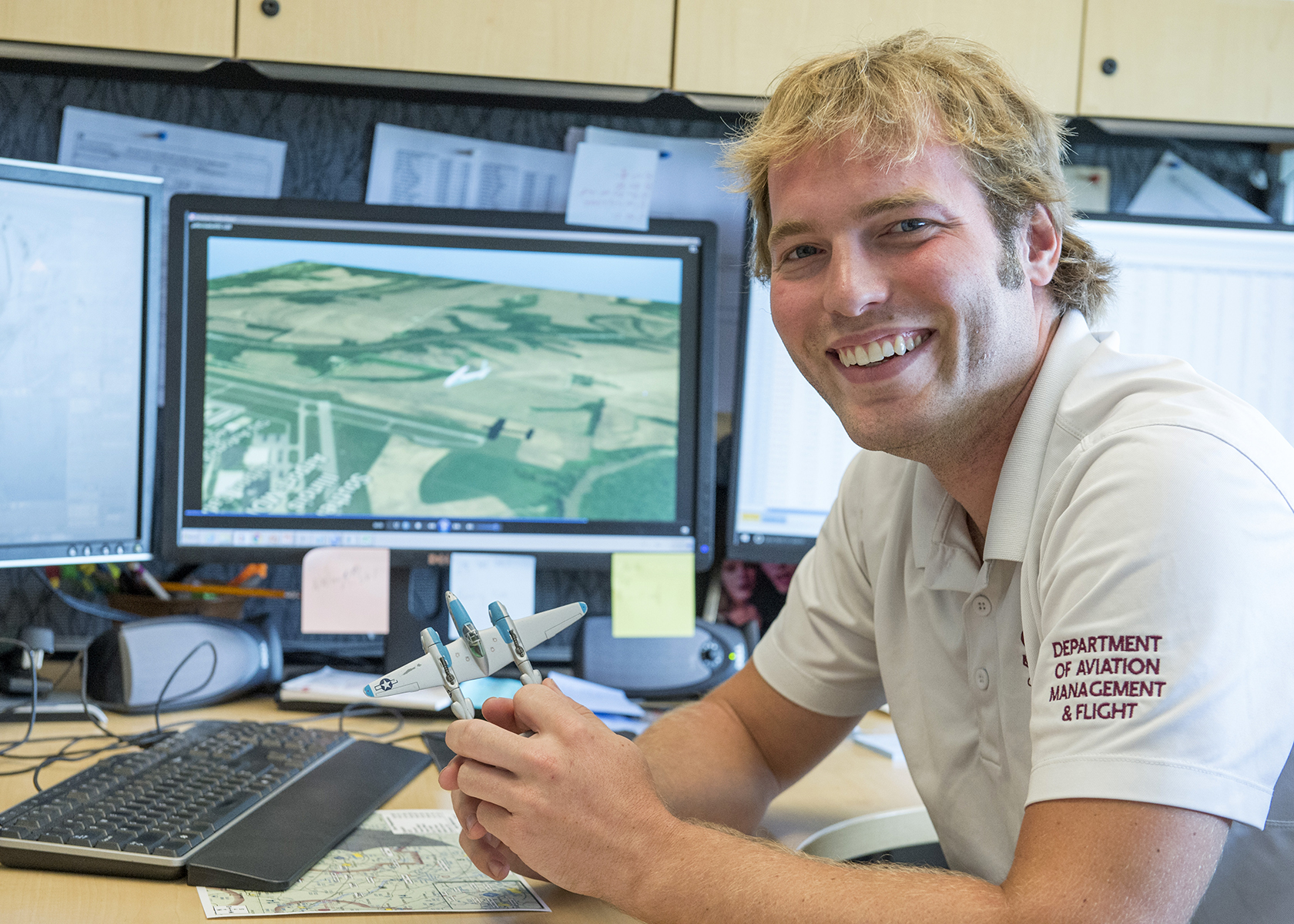
Ken Bro, assistant instructor, SIU Carbondale Department of Aviation Management and Flight. (Photo by Russell Bailey)
June 09, 2017
Analytics will help student pilots make better decisions
CARBONDALE, Ill. – Instructors in Southern Illinois University Carbondale’s aviation program are using analytics to track student pilot errors on approaches and landings, research they also hope can become another tool pilots use in determining whether it is safe to land.
For the last year, Ken Bro, an assistant instructor in the aviation management and flight program, has been meshing variables from student landings, including engine performance, wind, altitude, speed and a plane’s bank, to examine safety.
The aviation program’s safety committee is using the findings from approximately 4,000 landings at the Southern Illinois Airport over the last four years to make recommendations to training instructors who work with students. The data is limited for now to information gleaned from five aircraft with Garmin G-1000 avionics glass cockpits.
The data shows landing approaches from about 200 feet above the ground. By looking at variables of air speed, pitch and descent rate, the data can indicate whether the pilot had a good landing, bad landing or should have gone around and tried another approach.
“We can let people know that these things are happening and address them in training,” Michael Robertson, associate professor and program safety officer, said. “Its use is really unlimited in trying to determine things we could address that we normally would not know about. We can address these things before something bad happens.”
Bro and Robertson emphasize that students, many of whom have instructors with them, are flying safely, but that there is always room for improvement in performance. The data shows “very, very few incidents at all,” Bro said.
“You see things where there is a landing where they should have gone around, but we don’t have accidents … or really bad approaches or landings,” Bro said.
The safety management system’s goal is identifying any risks before accidents occur, Robertson said.
“Everything we have looked at in the data indicates that students are out there flying safely,” Robertson said. “I don’t believe people are out there doing anything intentionally. Now we can see what people are doing. This is not to be used as punitive … but to identify trends within the data to help everybody.”
The No. 1 cause of accidents is loss of control on landings and many stem from bad approaches. Bro is looking to extend the data collection into research that can help general aviation pilots determine whether to land or try another approach based on inflight data. He is hoping to get more landing data nationally and perfect the model. Bro said the goal is to get software that could work from a cellphone app to assist pilots in their decisions.
“There is nothing in any aircraft that tells you don’t land right now,” he said. “This is getting there. It says based on historic data on whether people should have or should not have landed, this is what the historic approach looks like.”
Robertson agrees.
“Ultimately, it’s not going to replace a pilot’s judgment. This will be another tool they use to make better decisions, especially for those pilots with less experience,” he said. “It gives them more information to help them make better decisions.”
